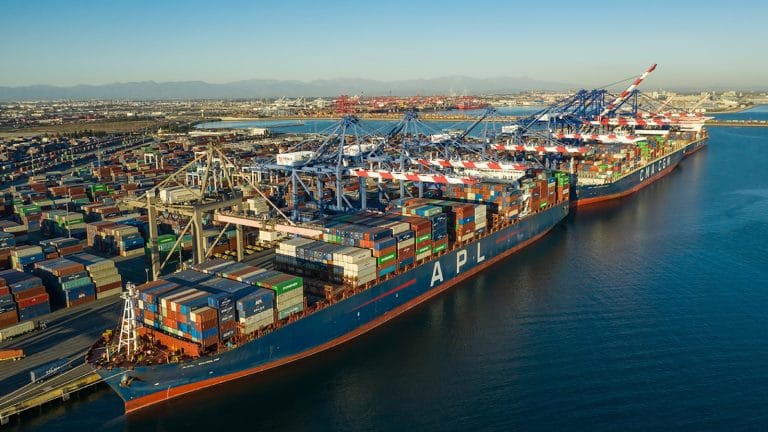🎧 Listen to This Article
The twin ports of Los Angeles and Long Beach, the largest gateways for U.S.-Asia trade, are witnessing a significant rise in inbound container volumes from China as importers frontload shipments ahead of an anticipated tariff hike deadline on August 12, set by President Donald Trump.
This uptick marks the strongest wave of shipments since January 2025, as logistics players attempt to hedge against looming trade uncertainties.
Surge Snapshot: Container Traffic and Forecasts
According to Captain J. Kipling Louttit, Executive Director of the Marine Exchange of Southern California, container ship activity has surged over recent days:
- 64 ship arrivals Friday
- 68 on Saturday
- 64 on Sunday
“This is a pretty solid forecast of an increase in container ship arrivals over the next one to two weeks,” Louttit said. Vessel data shows heavy arrivals from Asia, especially China, with extended routing through the Panama Canal, Central and South America, and Pacific territories.
Trump’s August Tariff Threat
President Trump’s trade team has imposed an August 12 deadline for finalizing a trade deal with China, warning that tariffs on a vast range of imports could rise sharply if no agreement is reached. The administration’s stance has pushed U.S. importers to accelerate freight bookings from Chinese suppliers.
Port Operations and Capacity
Despite the increase, both ports remain well under stress thresholds:
- Port of Long Beach: Operating at 60% capacity
- Port of Los Angeles: Operating at 70% capacity, and currently managing less than 30% of peak Covid-era cargo volumes
Officials confirmed no risk of congestion as bookings beyond July have tapered. “We’re not seeing retailers building deep inventories for Q4 holiday season yet,” said Gene Seroka, Executive Director of the Port of Los Angeles.
Impact on Supply Chain & Labor
While not a full-scale surge, the current influx of containers is a positive blip for supply chain players:
- Trucking companies and railroads benefit from full loads
- Dockworkers and warehouse operators are seeing improved activity
- Canceled sailings have dropped sharply — from 18 in June to just 4 combined in July and August
“This cargo flow is bringing people back to work on the docks,” Seroka told CNBC. Yet, he warned of uncertainty ahead: “There are looming trade negotiation deadlines in July and August that will impact volume forecasts for the remainder of the year.”
Broader Implications
This episode underlines how geopolitical friction can disrupt freight flows even without a formal policy change. While tariffs have not yet been imposed, the mere threat has prompted preemptive reshuffling of global cargo schedules. It reflects a wider trend of “just-in-case” logistics replacing “just-in-time” strategies, especially in high-volume corridors like China–US West Coast.
With negotiations still unfolding, importers, forwarders, and carriers are keeping a close watch on Washington and Beijing. If talks stall, further wavefront shipping and rerouting toward East and Gulf Coast ports may follow.
For further details, clarification, contributions, or any concerns regarding this article, please get in touch with us at editorial@tax.news. We value your feedback and are committed to providing accurate and timely information. Please note that our privacy policy will handle all inquiries.



